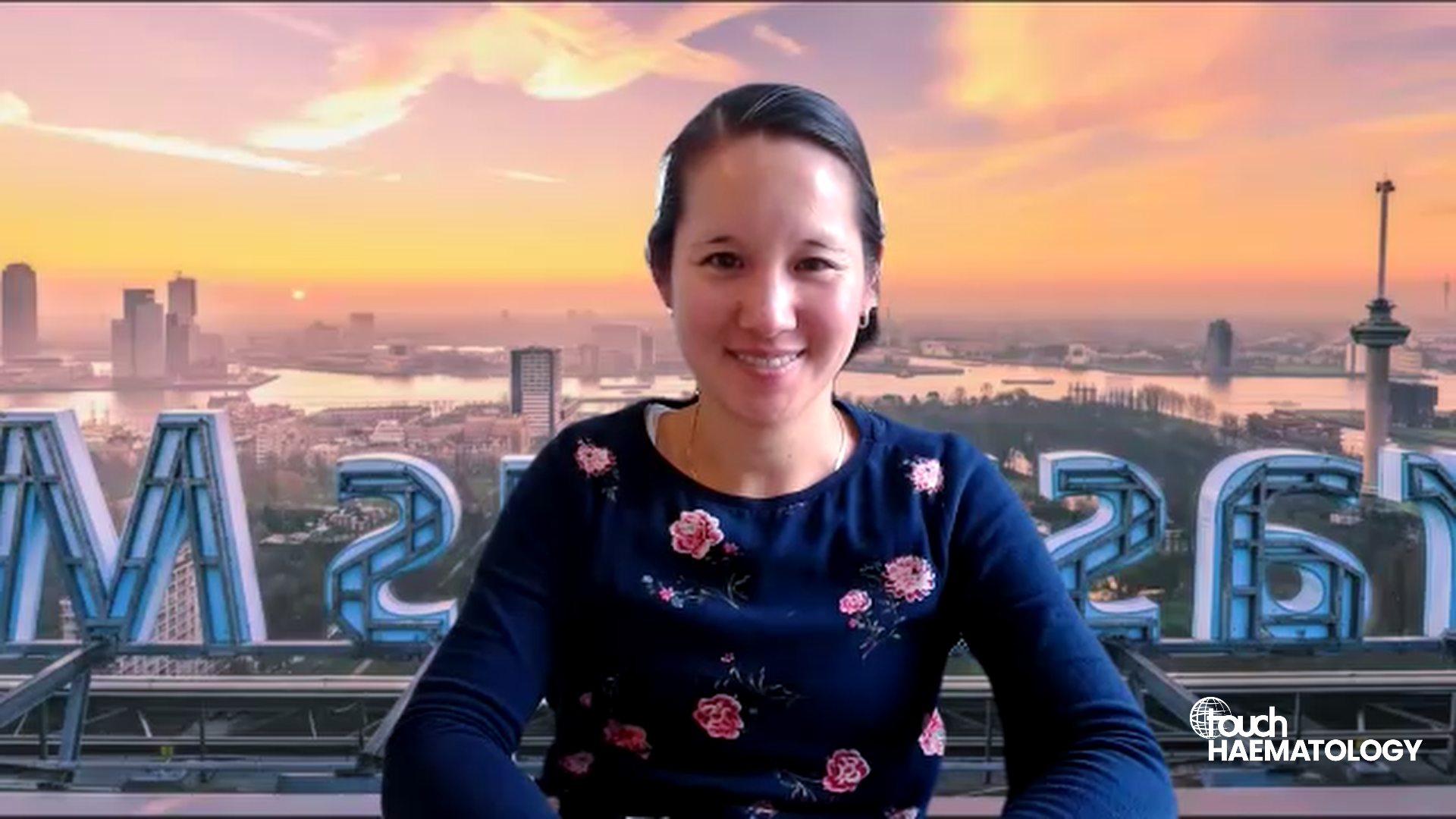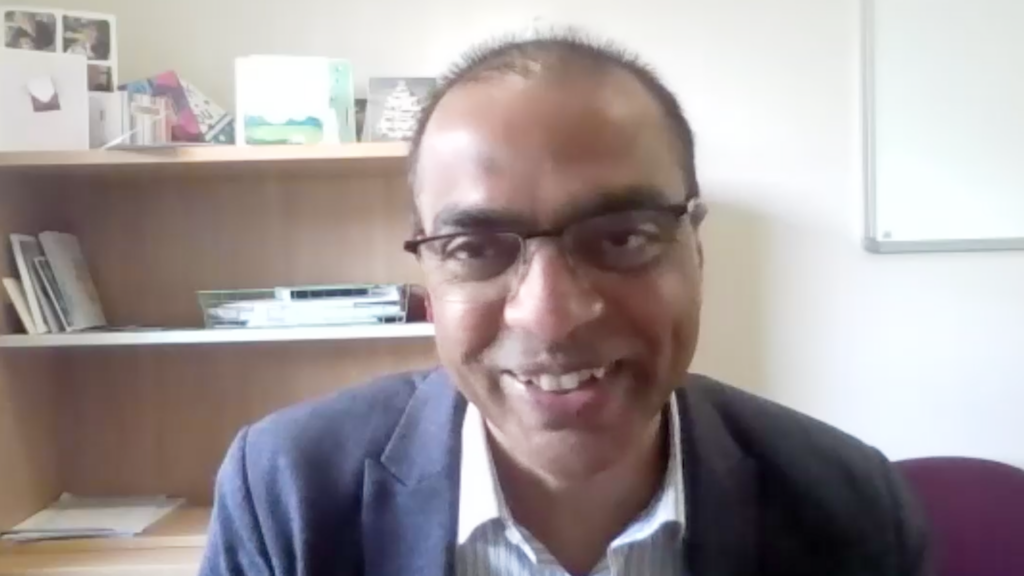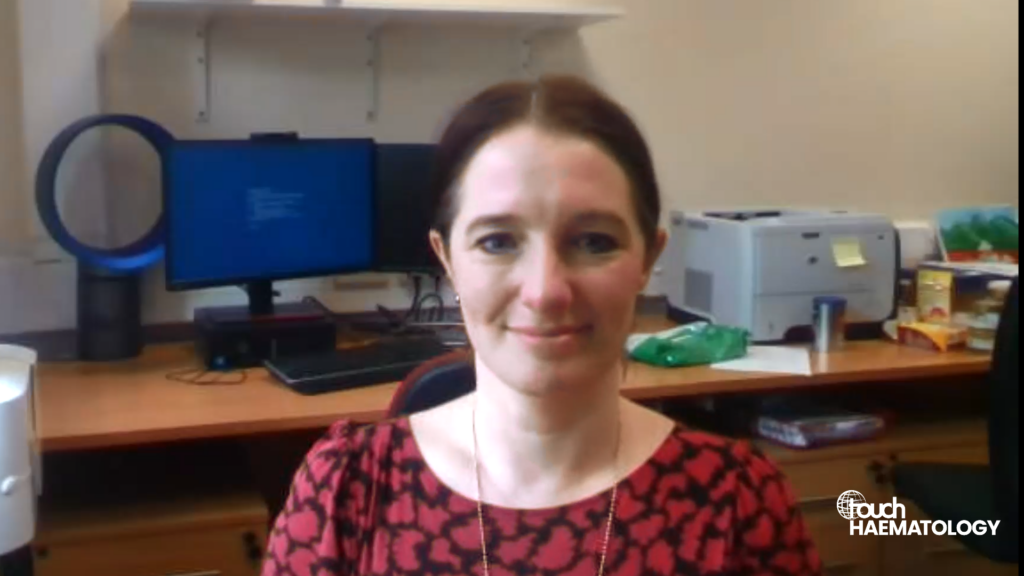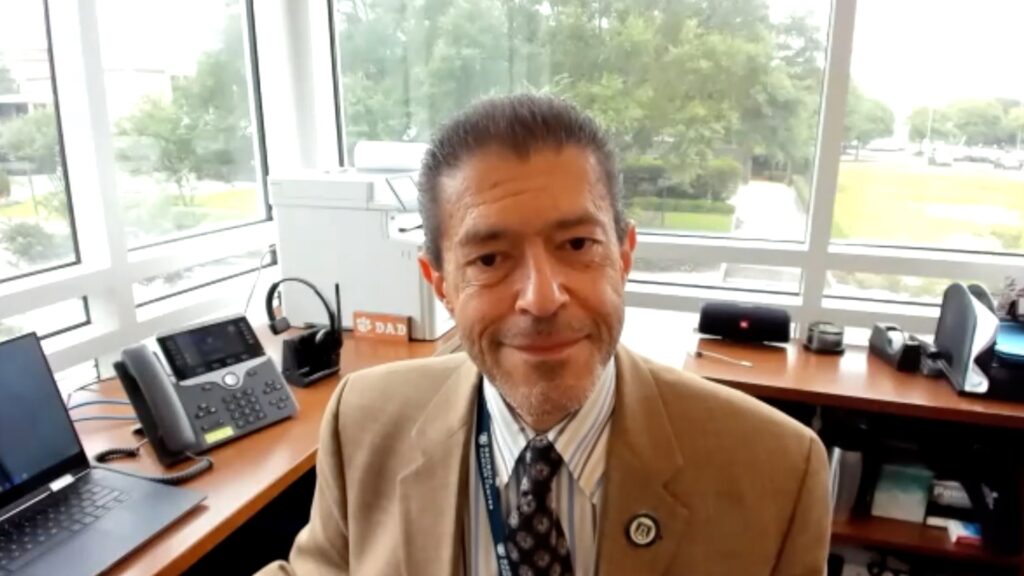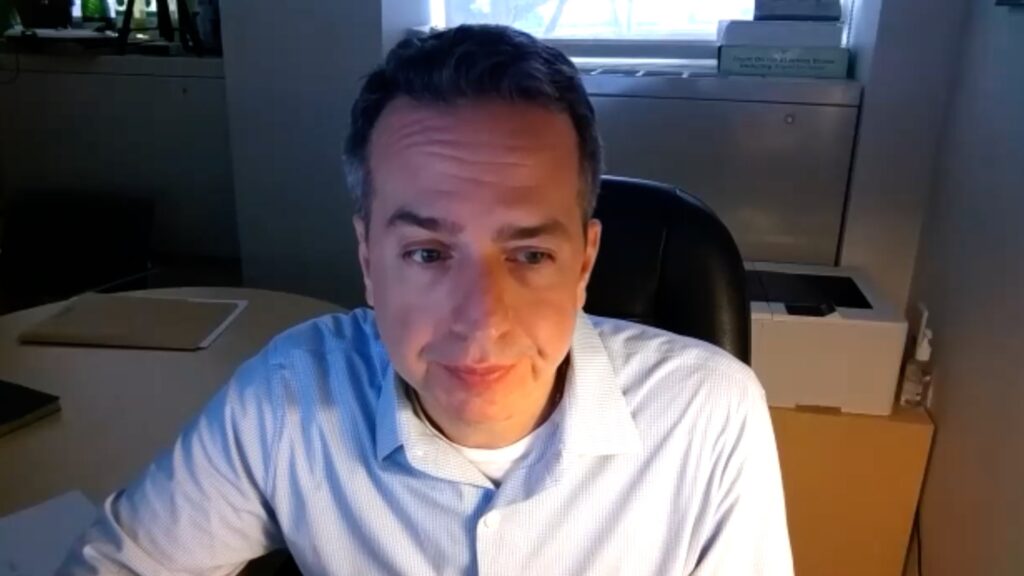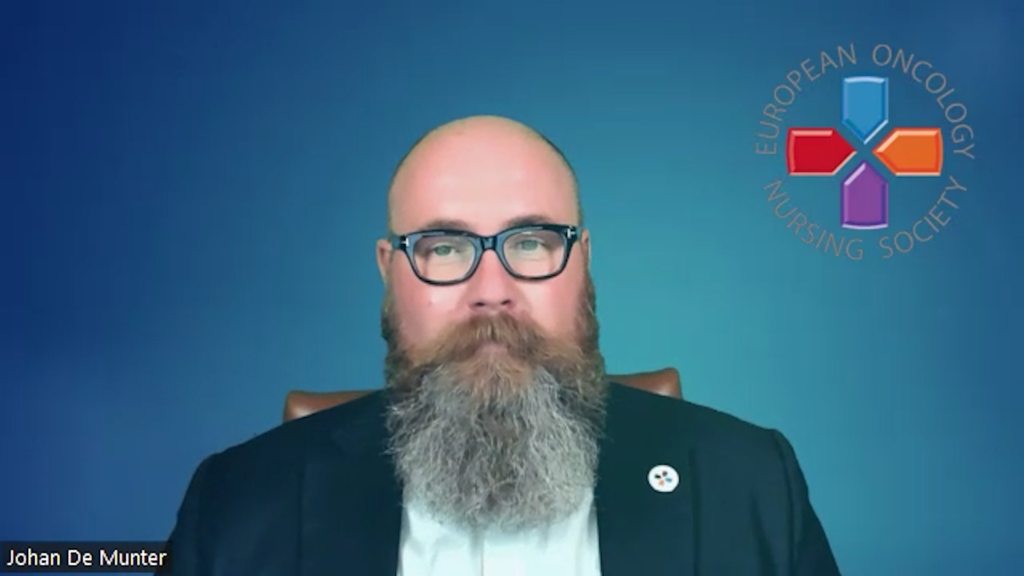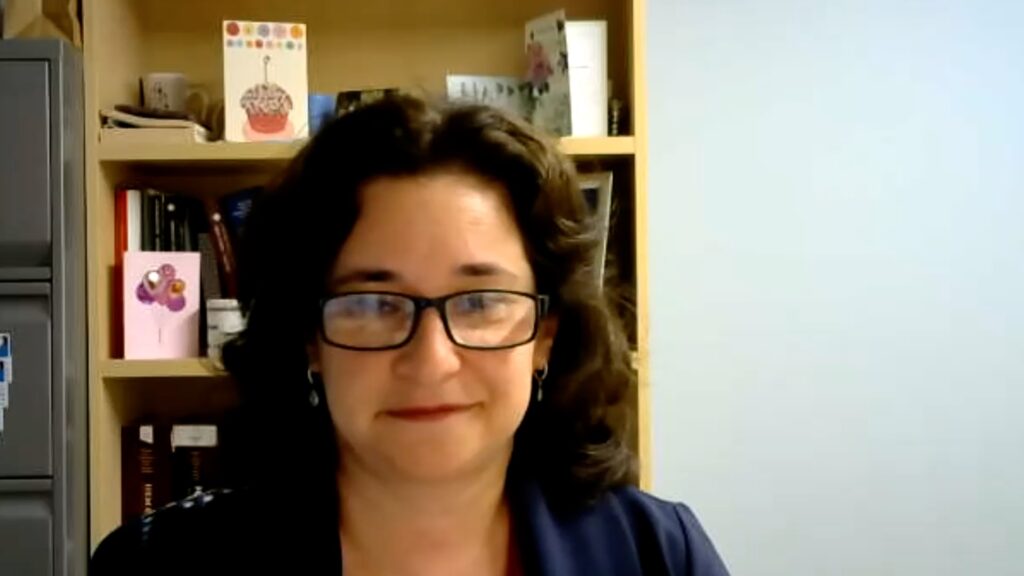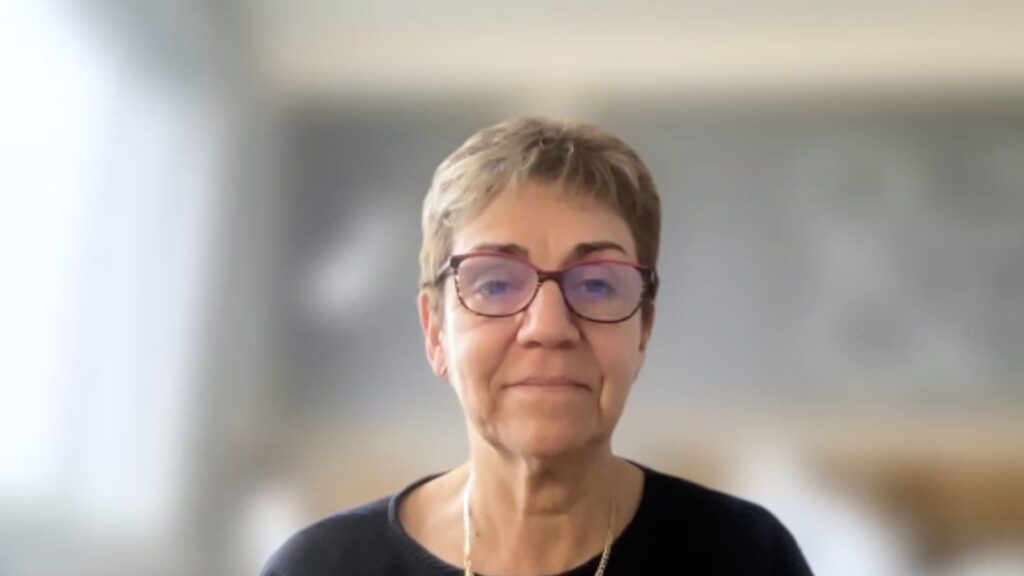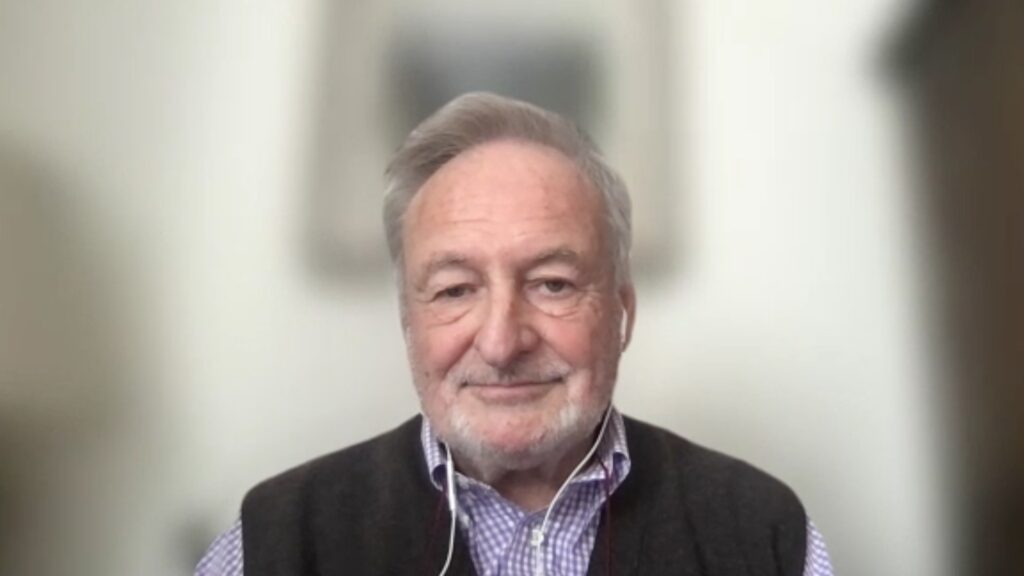Myelofibrosis is a complex haematological malignancy for which the current first-line treatment is Janus kinase inhibitors. touchHAEMATOLOGY caught up with one of our valued Editorial Board members, Dr John Mascarenhas (Icahn School of Medicine at Mount Sinai, NY, USA) to discuss the current therapeutic options for myelofibrosis and their limitations.
The abstract entitled ‘UPDATED DURABILITY OF RESPONSE AND SAFETY IN MANIFEST ARM 3: PELABRESIB (CPI-0610) COMBINED WITH RUXOLITINIB FOR JAK INHIBITOR TREATMENT-NAÏVE PATIENTS WITH MYELOFIBROSIS’ (Abstract #P1027) was presented at the EHA 2023 Congress, 8–11 and 14–15 June 2023.
Questions:
- Could you give us a brief overview of the treatment paradigm for myelofibrosis? (0:12)
- What are the limitations of current therapeutic options for myelofibrosis? (3:11)
Disclosures: John Mascarenhas discloses consultancy for Novartis, Incyte, CT Bio, Kartos, Karyopharm, Celgene/BMSRoche, Imago, GSK, Pfizer, AbbVie, MorphoSys and Geron, grant/research support from Geron, Incyte, CTI, AbbVie, Celgene/BMS, Novartis, PharmaEssentia and Karyopharm, and is on the advisory board for Incyte, Morphosys, CTI, Geron, BMS, Imago and Galecto.
Support: Interview and filming supported by Touch Medical Media. Interview conducted by Lisa Glass.
Filmed as a highlight of EHA 2023.
Transcript
My name is John Mascarenhas. I am a Professor of Medicine at the Icahn School of Medicine at Mount Sinai, New York City.
Could you give us a brief overview of the treatment paradigm for myelofibrosis? (0:12)
Myelofibrosis is a complex haematologic malignancy that originates at the level of a stem cell and there’s a lot of clinical heterogeneity and variability in the way the patients present and they behave. We know that even in terms of risk stratification, there are patients that can have, you know, very low risk features at baseline, with a prognosis that could be measured on the order of 10+ years, and then a patient who can present with significant adverse clinical variables with the prognosis that could be closer to 1 or 1.5 years. So there’s a lot of variability in the outcomes of patients. So we’d use pragnostication, risk stratification, or put patients into risk groups, and that generally helps us decide on whether a patient may be appropriate for stem cell transplantation, which is the only curative option, at a risk of morbidity and mortality. Unfortunately, many of our patients really aren’t candidates for transplant either because they’re too advanced in age or they have too many competing comorbidities. So really, the reality is only a fraction of patients actually get transplanted and cured with this modality. So really the majority of patients are getting JAK inhibitors as the first line of therapy to address spleen and symptom burden, there are a proportion of patients that are predominantly faced with anemia as the major clinical manifestation. So for those patients, we follow an algorithm that’s endorsed by the NCCN that is very similar to our MDS algorithm. You check the erythropoietin level, you can give an ESA, if the EPO level is low, one can try danazol or immunomodulatory drugs like thalidomide or lenalidomide or even low dose pomalidomide, all of which collectively have response rates of about 30% in terms of anemia and frankly don’t really have durable responses even when they do occur. So it’s really an unmet need in anemia. We have great JAK inhibitor options for the spleen and symptom aspects, so ruxolitinib, fedratinib, pacritinib, particularly for those patients with cytopenic myelofibrosis phenotype, those patients that are on the opposite side of the proliferative patient, so the low platelets, anemia, and the disease biology does appear to be different in these patients. And then we are expecting a fourth JAK inhibitor to be approved in the US, momelotinib, which also, as an activim receptor inhibitor like pacritinib affords an anemia benefit. So we have this, you know, growing array of JAK inhibitors that do have differences in their kinome profile. There are some nuances in terms of toxicity and niches in which we can really cover and have options first line and second line now for our patients with myelofibrosis, which is fantastic and the field is now moving into combination therapies and trying to build upon these initial advances that we’ve made.
What are the limitations of current therapeutic options for myelofibrosis? (3:11)
I think that the unfortunate and obvious limitation is we don’t have available treatments that induce remissions and reliably and convincingly and dramatically change the natural course of the disease. And that that’s, you know, I think that’s due to multiple things, that’s due to the complexity of the disease and that’s due to the heterogeneity in which the patients present and behave. So there are a lot of attempts at trying to develop true stem cell directed therapies that will have that kind of an effect. So medicinal approaches outside of certain therapies like transplant that could provide functional cures and approaches for example like imetelstat, the telomerase inhibitor, which is an ongoing phase 3 study, with a primary endpoint of overall survival, I think is a great example of trying to move the field forward, and look beyond spleen and symptom burden, drugs like navtemadlin have been very impressive in terms of demonstrating a clear clinical activity both in the relapsed/refractory setting as monotherapy, but also as an add-on to JAK inhibitor therapy to salvage responses in which we see disease modification results like significant reductions in JAK2V617F for CALR mutant allele burden, fibrosis, circulating CD34 cells. So there is a lot of emerging data, more needs to be done in this sort of holy grail to try to effectively target this elusive stem cell that drives the disease. And until we effectively do that, we are looking at drugs that address aspects of the disease, but don’t really fully address the disease in the most meaningful way, which is disease course modification progression-free survival, event-free survival, overall survival.
Subtitles and transcript are autogenerated

